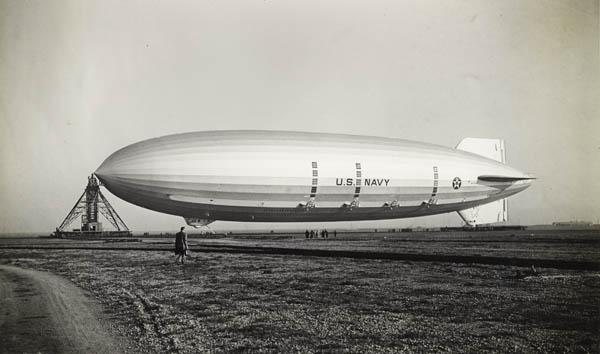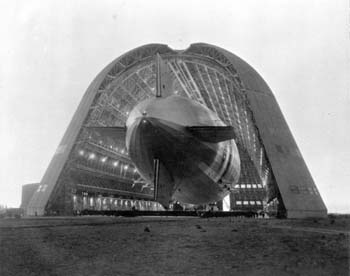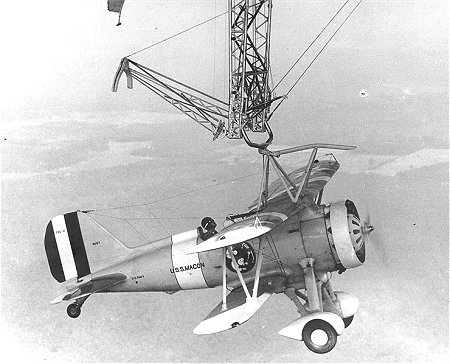
The Macon Disaster
Posted by:  Touchstone
Touchstone
N 36° 13.857 W 121° 54.290
10S E 598418 N 4010120
Riddle me this: how can an airplane crash into the ocean without a pilot, or for that matter, without even starting its engine. Read the description below on the demise of the USS Macon off of Point Sur, California and see how.
Waymark Code: WM1GY
Location: California, United States
Date Posted: 09/15/2005
Views: 293

On February 12, 1935 the USS Macon crashed into the Pacific
Ocean on its way North, just off the coast at Point Sur, California. On
board were 83 men and six Sparrowhawk Airplanes. At 785 feet long, the
Macon was the largest dirigible still flying, and the second largest to be built
in history (the USS Akron crashed two years earlier and was slightly
larger). The crash of the Macon brought an end to the romantic era of
dirigibles.

The Macon was built in Akron, Ohio, but it's ultimate home base
was Moffett Field. The massive hangars that once housed the Macon are
still in use today and are quite a site to behold as you drive by on the
freeway. I can only imagine what a spectacular sight it must have been when the
enormous Macon was coming and going from Moffett.
The Macon was the most advanced dirigible design yet for any
airship made. The framework was a stronger, improved design, which
consisted of a hollow steel hull. She used non-flammable helium in 12 huge
gelatin latex cells, and she could reach speeds of up to 87 miles per hour.

As a fighting fortress, she was equipped with six Sparrowhawk
Airplanes, which were housed in her belly when not in use. To launch the
planes, they would be slowly lowered on a trapeze, start their engines, and
unhook themselves to drop into the air in mid-flight. The reverse maneuver,
landing the airplanes back onto the trapeze, has been described as a "wild
white-knuckled ordeal".
The story of the discovery of the crash site and the expedition
that went to recover one of the historic Sparrowhawks (there is only one known
in existence) is a remarkable story to read. Two very well written
articles can be found at The
Monterey County Weekly and The
Monterey County Herald (click on the "more" link).
To log this Waymark would be a little difficult (hmmm...five
miles out at sea, and 1500 feet deep). The best way to get to see the area
of the crash, and hear the story is to take one of the guided tours at the Point
Sur Lighthouse State Historic Park. Admission is nominal, and the
views from the Point are breathtaking. There is also an excellent exhibit
on the Macon disaster at the Maritime Museum of Monterey located just off of
Portola Plaza by the Old Fisherman's Wharf.